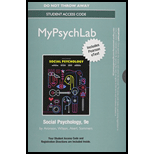
Introduction
Altruism consists of the motivation to help someone else, even if it comes at a cost to the one doing the helping. Sometimes people's helpful acts can stem more from self-interest, which involves hoping to receive something in return for their assistance. However, true altruism is when one's sole motivation for helping derives from a pure drive to benefit someone else, with no particular benefit to themselves.
Explanation of Solution
Correct answer and explanation
The best answer is (C), in which the best example of altruism involves Jawal donating money to a homeless shelter anonymously. Altruism involves the motivation to help other people, even when it comes at an expense to the one doing the helping. One's sole motivation for helping is to benefit someone else, with no benefit to themselves. Jawal's case of anonymously donating money to a shelter would qualify as altruism not only because his main drive was to help others but also due to the fact that he did not announce that he was doing so, thus indicating that he was not expecting anything in return.
Explanation for incorrect statements
Option (A) refers to Julia putting money in the church collection basket along with everyone else. However, this action would not qualify as altruism because, while it does come at some cost to herself, it occurred because she was simply doing what everyone else was doing. So, option (a) is incorrect.
Option (B) refers to Robert volunteering at his son's school to help his class. However, this scenario would actually be more akin to kin selection, which involves behaviors that aid a biological relative and are favored by natural selection. So, option (b) is incorrect.
Option (D) refers to Mary helping her husband with the dishes while hoping this will encourage him to make dinner more often. However, this situation would not count as altruism because Mary's assistance stems from self-interest. She hopes that her helpful action will be rewarded. So, option (d) is incorrect.
Therefore, the options (A), (B), and (D) are incorrect.
Want to see more full solutions like this?
Chapter 11 Solutions
NEW MyLab Psychology with Pearson eText -- Standalone Access Card -- for Social Psychology (9th Edition)
 Social Psychology (10th Edition)SociologyISBN:9780134641287Author:Elliot Aronson, Timothy D. Wilson, Robin M. Akert, Samuel R. SommersPublisher:Pearson College Div
Social Psychology (10th Edition)SociologyISBN:9780134641287Author:Elliot Aronson, Timothy D. Wilson, Robin M. Akert, Samuel R. SommersPublisher:Pearson College Div Introduction to Sociology (Eleventh Edition)SociologyISBN:9780393639407Author:Deborah Carr, Anthony Giddens, Mitchell Duneier, Richard P. AppelbaumPublisher:W. W. Norton & Company
Introduction to Sociology (Eleventh Edition)SociologyISBN:9780393639407Author:Deborah Carr, Anthony Giddens, Mitchell Duneier, Richard P. AppelbaumPublisher:W. W. Norton & Company The Basics of Social Research (MindTap Course Lis...SociologyISBN:9781305503076Author:Earl R. BabbiePublisher:Cengage Learning
The Basics of Social Research (MindTap Course Lis...SociologyISBN:9781305503076Author:Earl R. BabbiePublisher:Cengage Learning Criminalistics: An Introduction to Forensic Scien...SociologyISBN:9780134477596Author:Saferstein, RichardPublisher:PEARSON
Criminalistics: An Introduction to Forensic Scien...SociologyISBN:9780134477596Author:Saferstein, RichardPublisher:PEARSON Sociology: A Down-to-Earth Approach (13th Edition)SociologyISBN:9780134205571Author:James M. HenslinPublisher:PEARSON
Sociology: A Down-to-Earth Approach (13th Edition)SociologyISBN:9780134205571Author:James M. HenslinPublisher:PEARSON Society: The Basics (14th Edition)SociologyISBN:9780134206325Author:John J. MacionisPublisher:PEARSON
Society: The Basics (14th Edition)SociologyISBN:9780134206325Author:John J. MacionisPublisher:PEARSON





